Unlike the previous month when no emergency was reported to the Unit, this month we got three cases
Unlike the previous month when no emergency was reported to the Unit, this month we got three cases. These were a male Impala with a snare around the neck at Ngutuni sanctuary in Voi which was removed successfully. The snare was tight but fresh and had not yet inflicted any injury. 
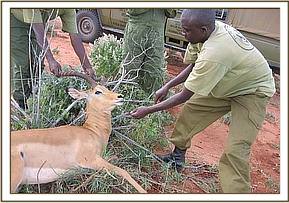
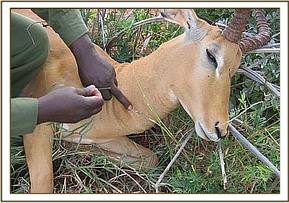

The other was a zebra foal near Man Eaters railway station in Tsavo East which had a badly infected wound at the right fetlock joint. The animal was in a lot of pain and could not bear any weight on the affected leg. It was difficult for us to establish the cause of the injury. The prognosis was poor and the animal was euthanised with intravenous 20% Pentobarbital Sodium (Euthatal®) to stop further suffering.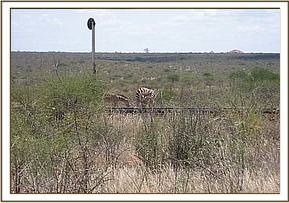
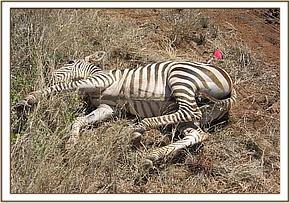
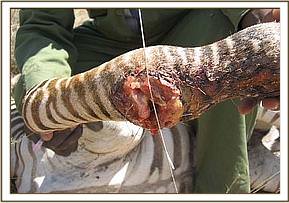
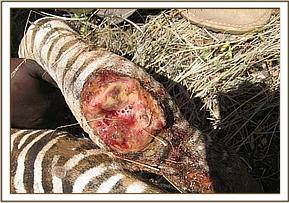

Lastly on the 27th, two African wild dogs with snares around the necks were reported to the Unit near Voi Safari Lodge. This was an interesting case because it was the first of its kind to be reported not only to the Unit but also to the KWS Veterinary Department. Our response was immediate and we found them by the road about 2 km to the lodge. Using binoculars, we were able to identify the two, an adult and a sub-adult female from the pack of seven. The snare in the sub-adult was loose while that in the adult female looked a bit tighter and we could observe some injury on the left side of the neck. The park seemed very calm and was undisturbed by our presence. We retreated some metres to prepare the darts. These were ready in about five minutes. We intended to dart the two animals in quick succession. However on going back to dart, we found the pack had started running away into the bushes. We tried to follow but they were too fast for us. They soon got lost in the bushes and we could not find them. It seemed they were disturbed by two vehicles that passed by as we were preparing the darts. Wild dogs are normally tricky to dart unless they are close to their den or they are at a kill. Rarely do they stay at one place for too long. We don’t know the homing range of this particular pack for there has been no previous sighting of it. We will search for it as well as enquire from visitors of any sightings elsewhere in the park. We also recognise that they can range far and wide. Therefore we should be ready to respond should they reappear in other places. 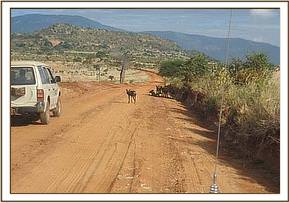
Prepared by: David Ndeereh
The Mobile Veterinary Unit operated by The David Sheldrick Wildlife Trust working with The Kenyan Wildlife Service and funded by Vier Pfoten.